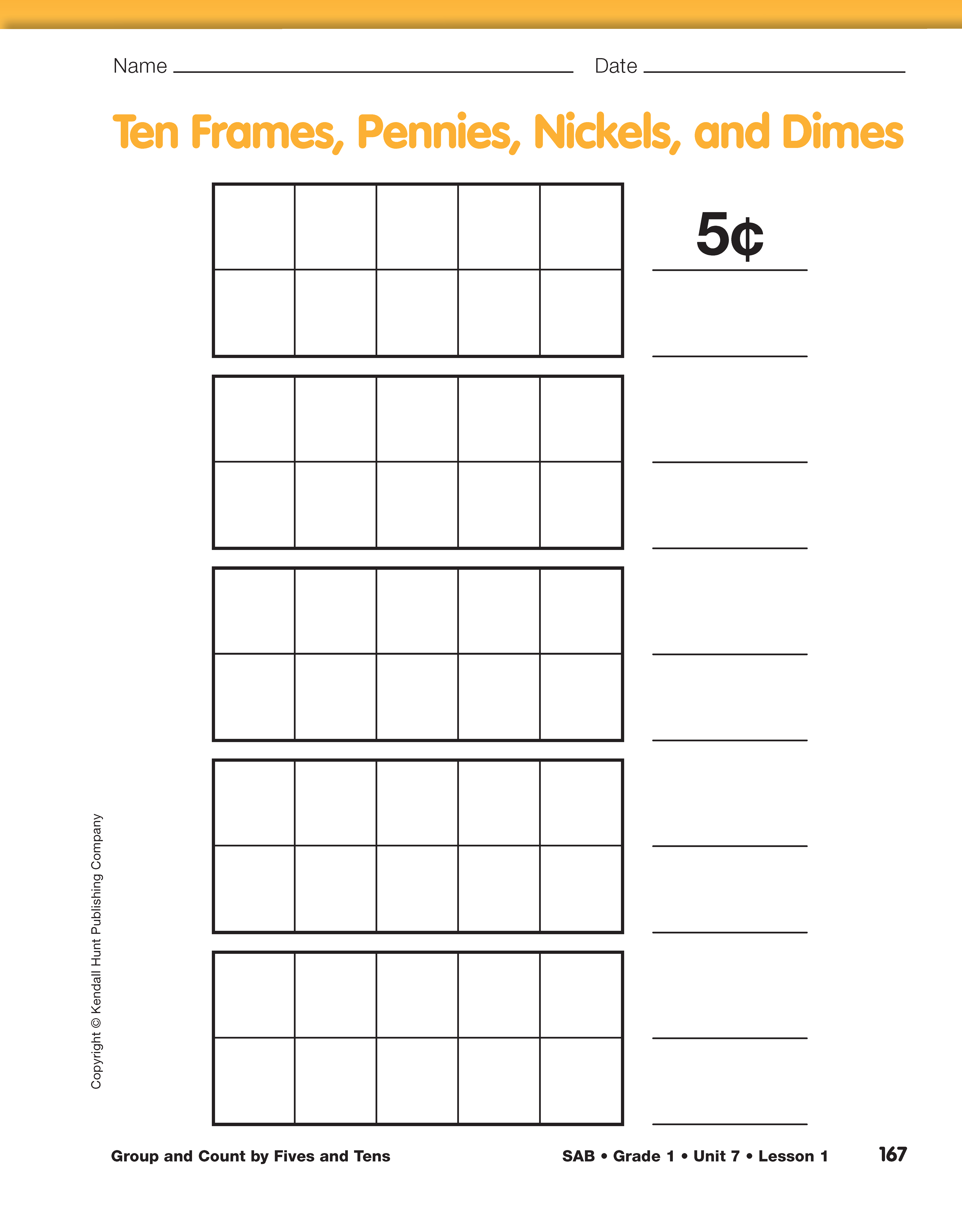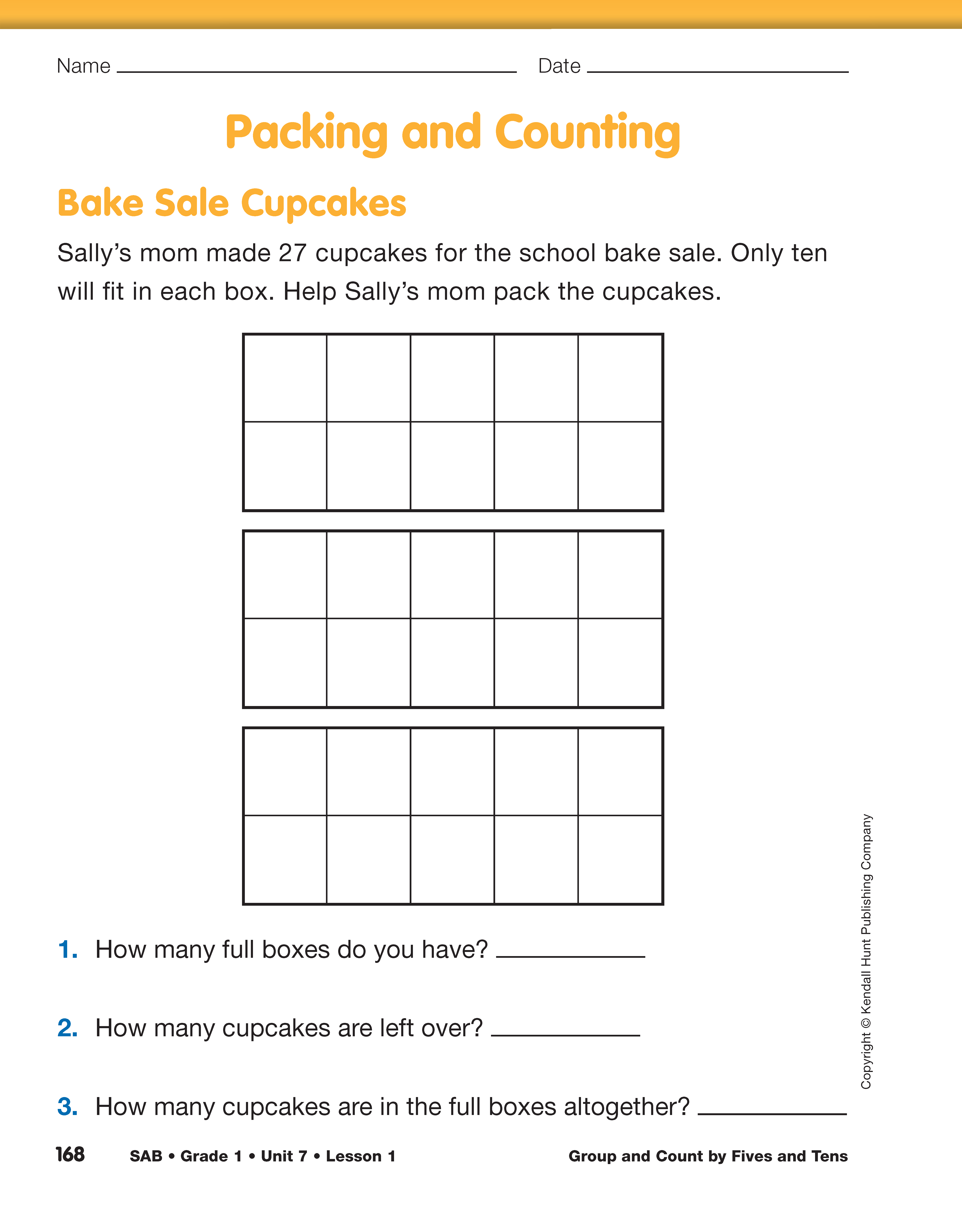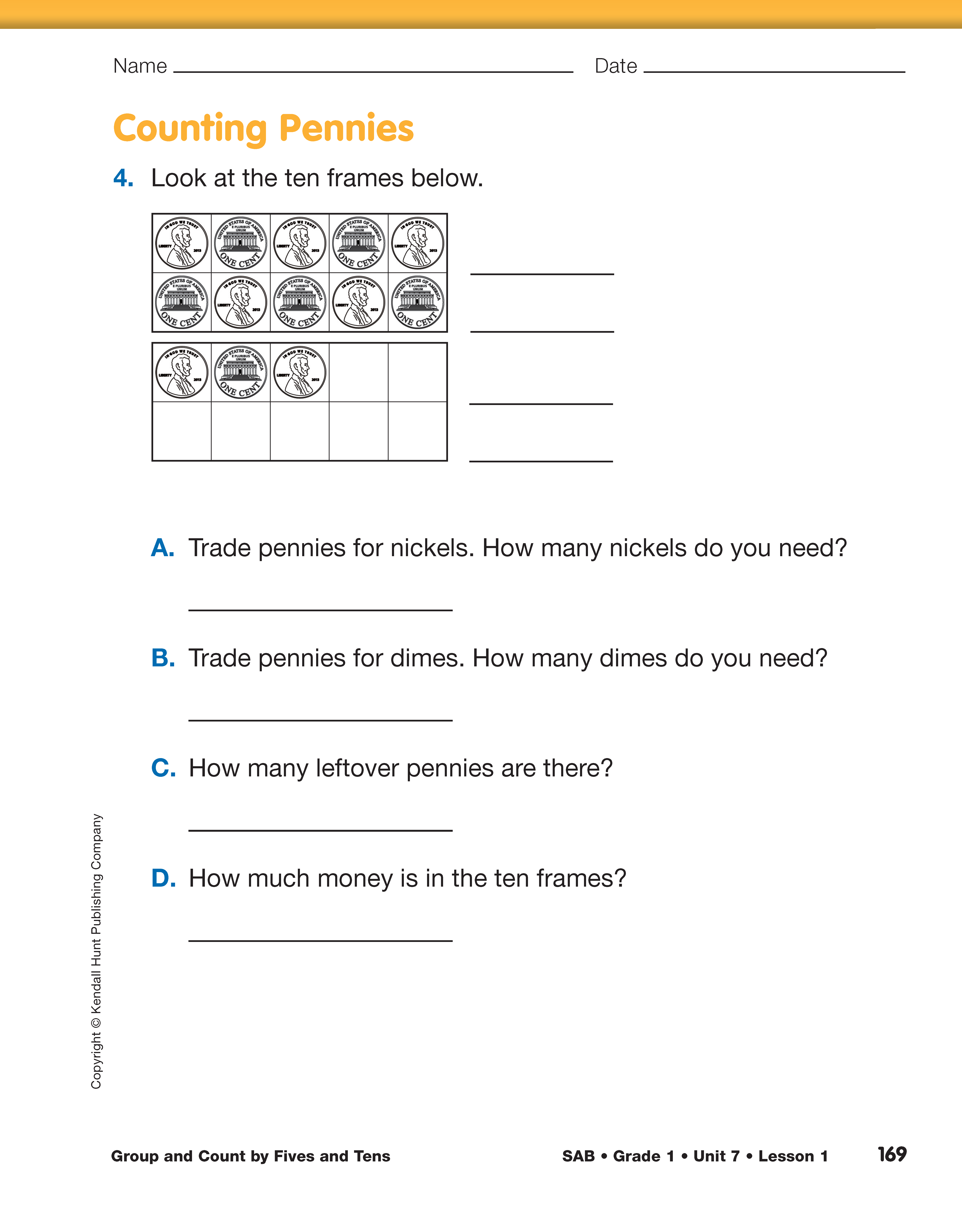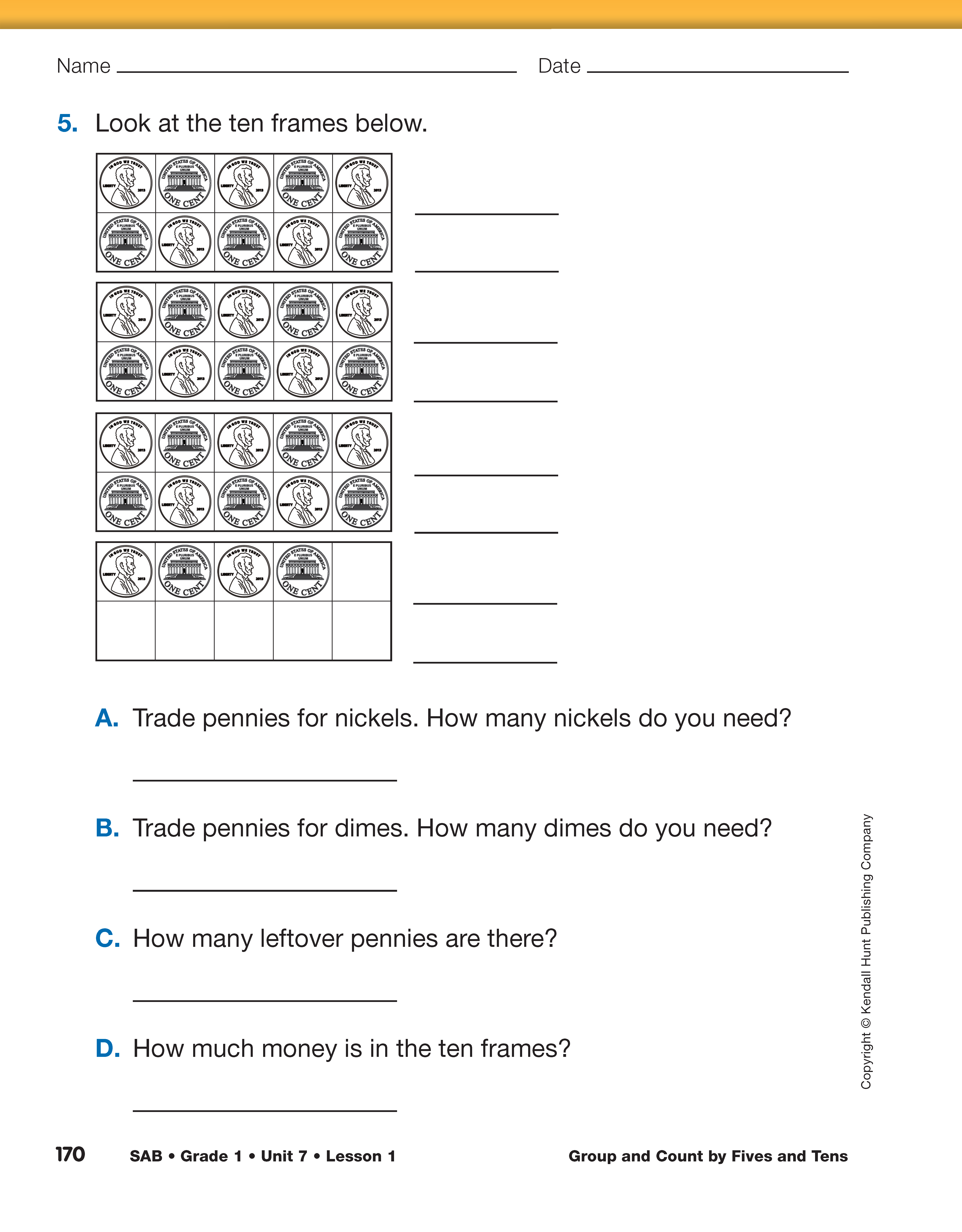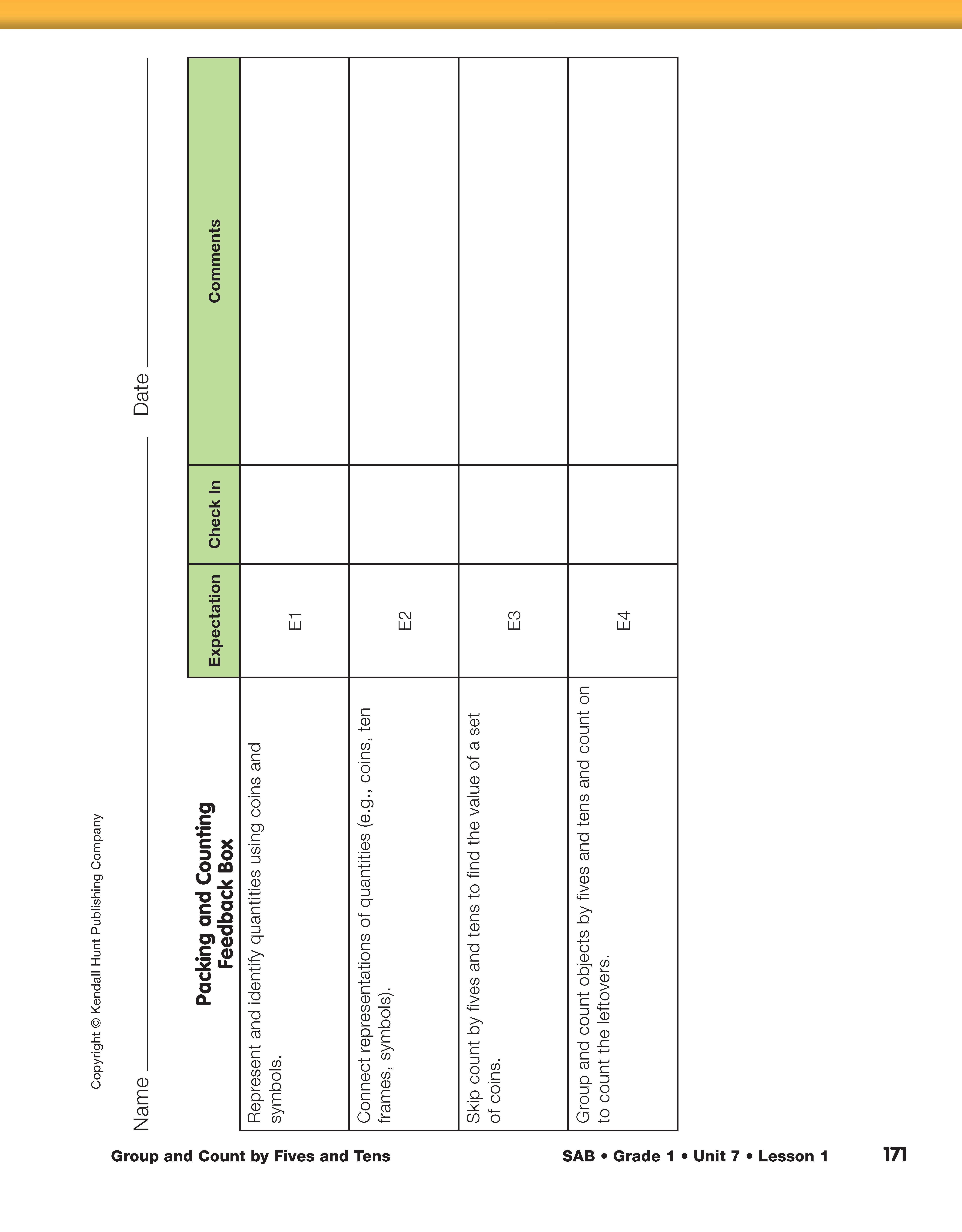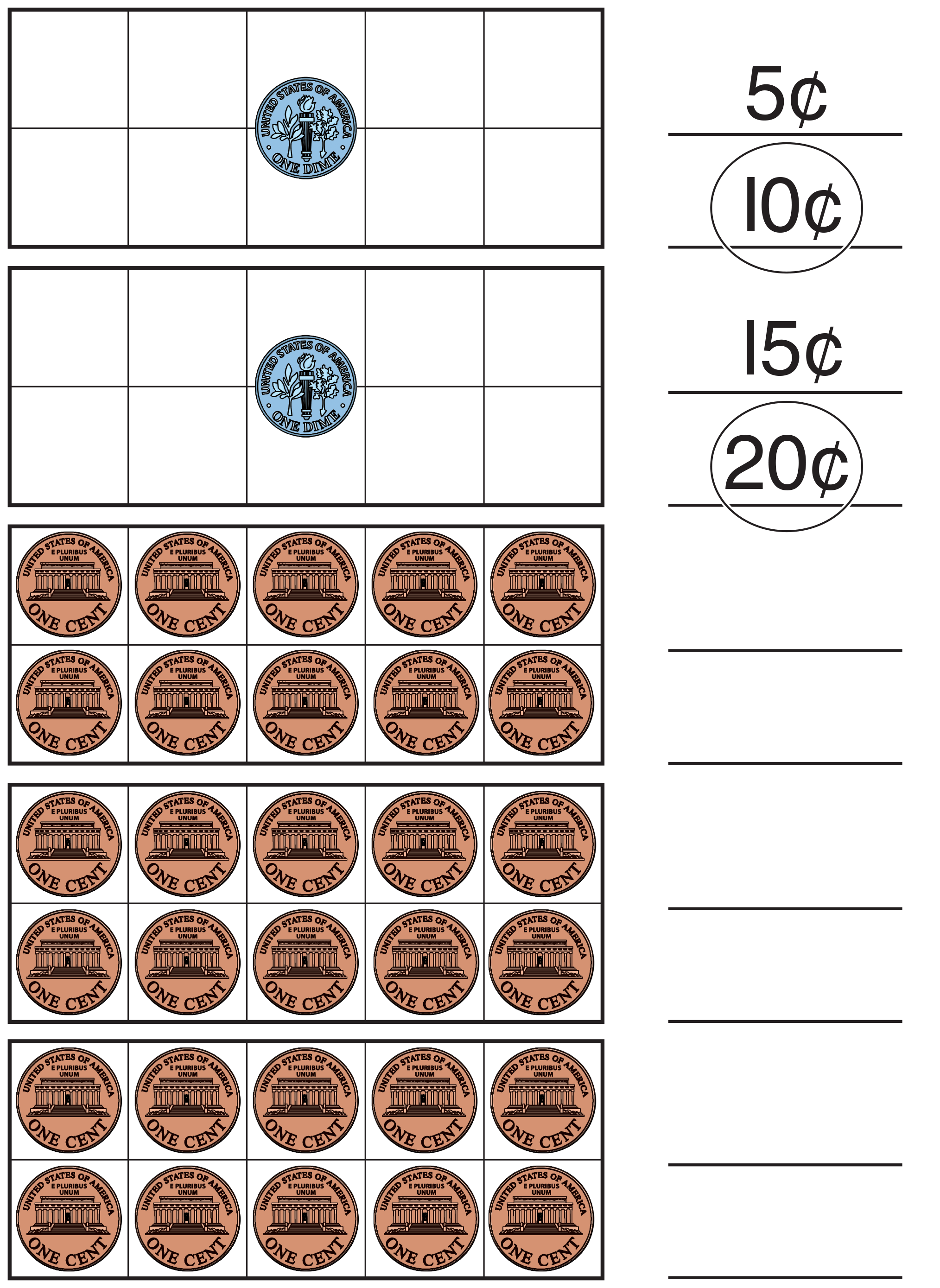Group and Count by Fives and Tens
Est. Class Sessions: 2–3Developing the Lesson
Part 1: Count with Pennies, Nickels, and Dimes
Estimate Pennies. Briefly review skip counting by twos, fives, and tens using the class number line.
Show the class a plastic bag of 50 pennies. Ask students to estimate how many pennies are in the bag and to explain how they arrived at an estimate. Students may use what they learned about counting pennies when they completed a similar activity in Unit 5. Write students' estimates on the board.
Using a display of the Ten Frames, Pennies, Nickels, and Dimes page in the Student Activity Book, ask students to count the pennies as you place them in the ten frame. Point out the 5¢ symbol next to that row. Fill in the rest of the ten frame with five more pennies, as students count on by ones to ten. Write 10¢ next to the bottom row of the ten frame.
Show students the remaining pennies in the bag and ask:
Fill in the remaining ten frames with pennies in the same manner as above, five at a time, and have students count by ones along with you until you have placed all 50 pennies in ten frames. Each time that you complete a row, record the total value of the pennies beside the row.
Once students have counted the 50 pennies, have them revisit their estimates.
Ask:
Students may point to numbers on the class number line to visually show which estimates are closest.
Count by Fives and Tens with Coins. Next ask students for a faster way to count the pennies. Students may suggest counting by twos, fives, or tens. Ask them to demonstrate the methods they suggest.
Once the pennies are counted, show students a nickel. Remind students they used nickels in Unit 5. Review replacing five pennies at a time with nickels and counting the total by fives again to arrive at fifty cents.
Arrange the 50 pennies in the ten frames again. Show students a dime and tell them that it is worth ten cents. Ask students how many pennies can be replaced with one dime (10 pennies). Demonstrate replacing the ten pennies on each ten frame with one dime and count by tens to fifty cents. See Figure 1.
Discuss the relationships among pennies, nickels, and dimes further. Demonstrate even exchanges using pennies, nickels, and dimes on the ten frames.
Ask:
Explore Pennies, Nickels, and Dimes. Ask a volunteer to take a handful of pennies from your collection of fifty pennies. Display the pennies. Ask students to write down an estimate for the number of pennies in the handful.
Discuss efficient ways to count the pennies. Students will likely suggest organizing the pennies in ten frames and counting by fives or tens or trading pennies for nickels and dimes. Have students demonstrate the strategies. Compare students' estimates with the actual value. Note which estimates are closest using the class number line or using the ten frames themselves.
Provide each student pair with a bag of 35–50 pennies and a bag with nickles and dimes.
Give the following directions:
If students are having difficulty, suggest that they use the ten frames on the Ten Frames, Pennies, Nickels, and Dimes page in the Student Activity Book. Provide time for students to complete the Packing and Counting pages in the Student Activity Book. Students may use pennies, nickels, and dimes as needed to determine answers. Observe students' strategies as they work.















